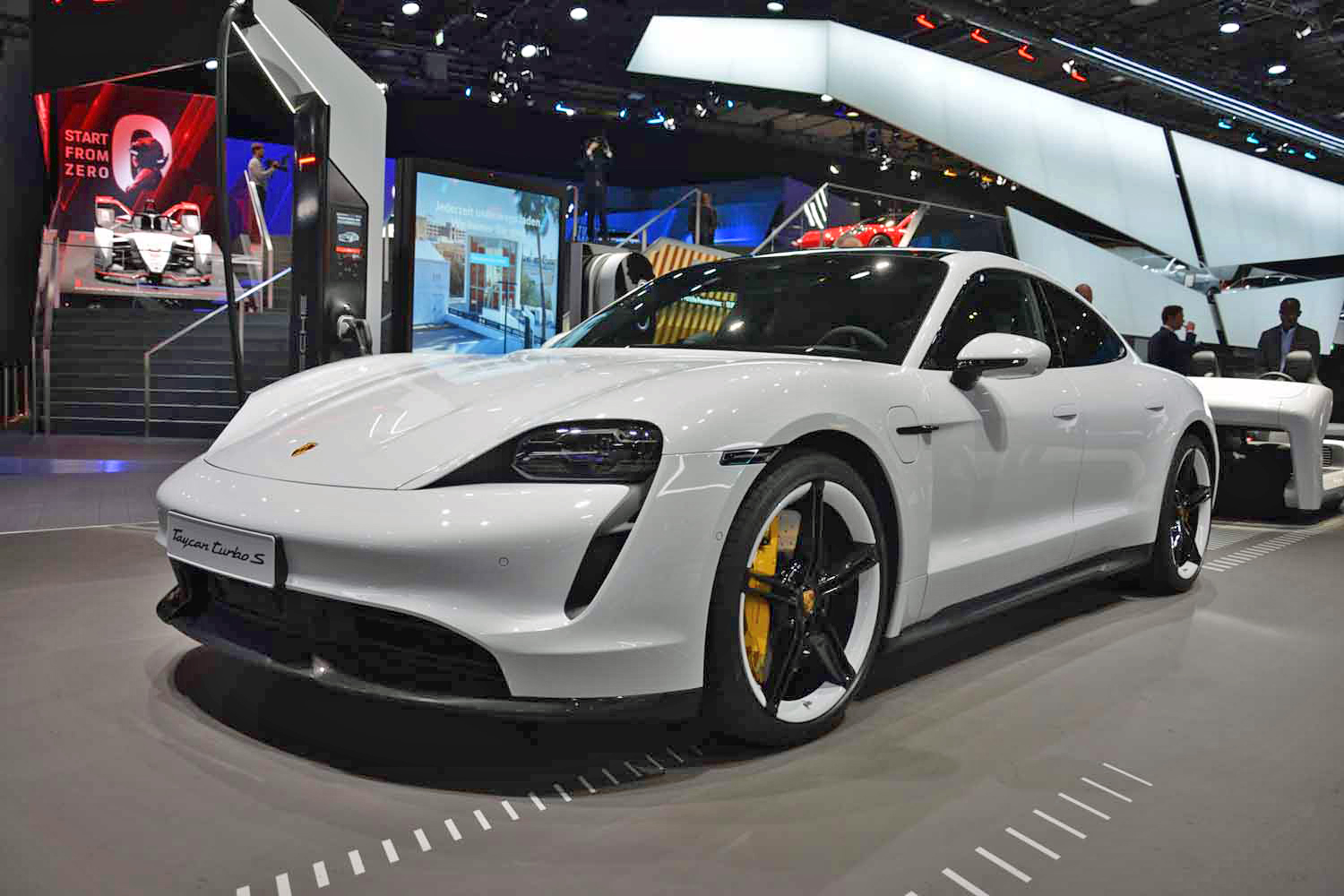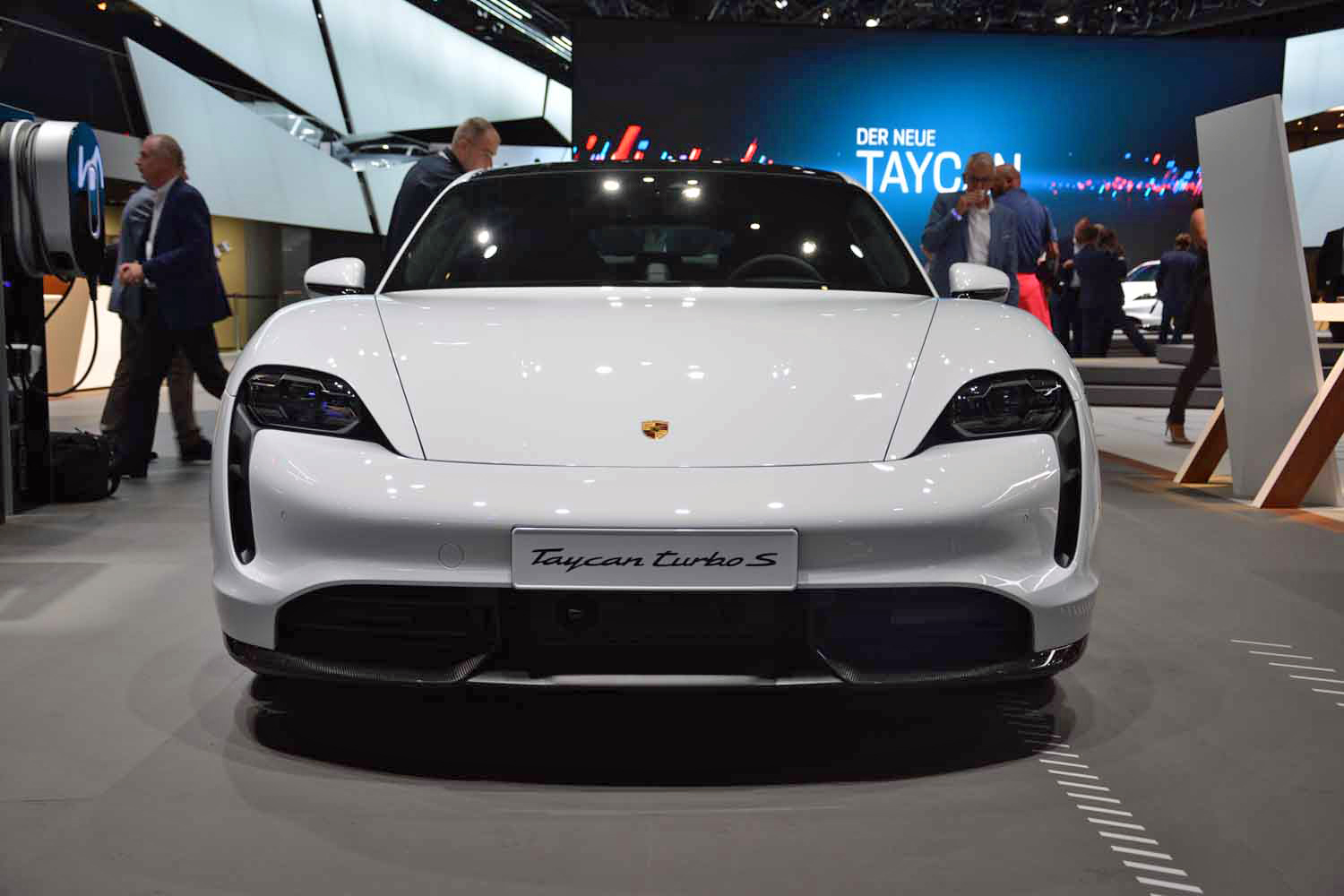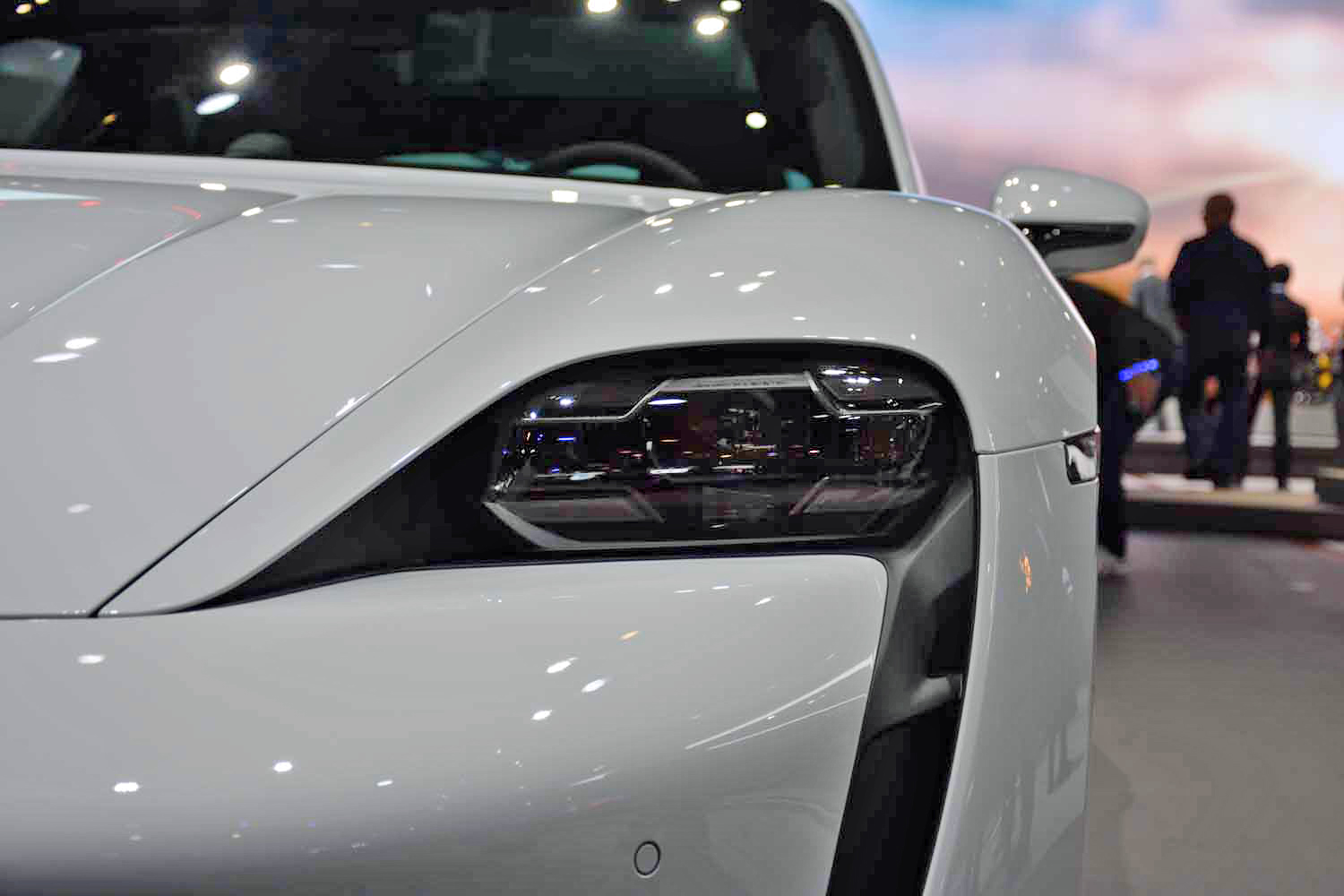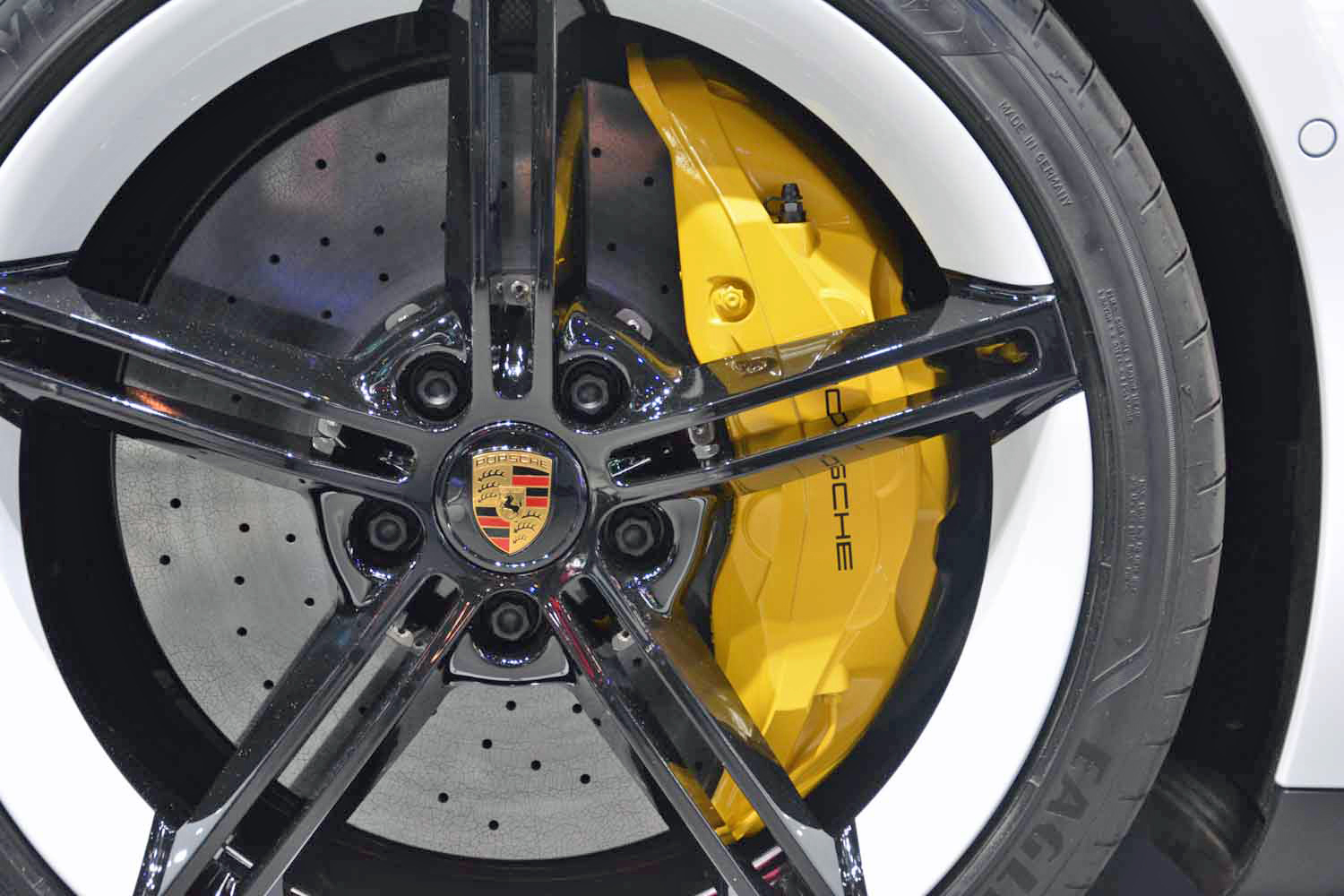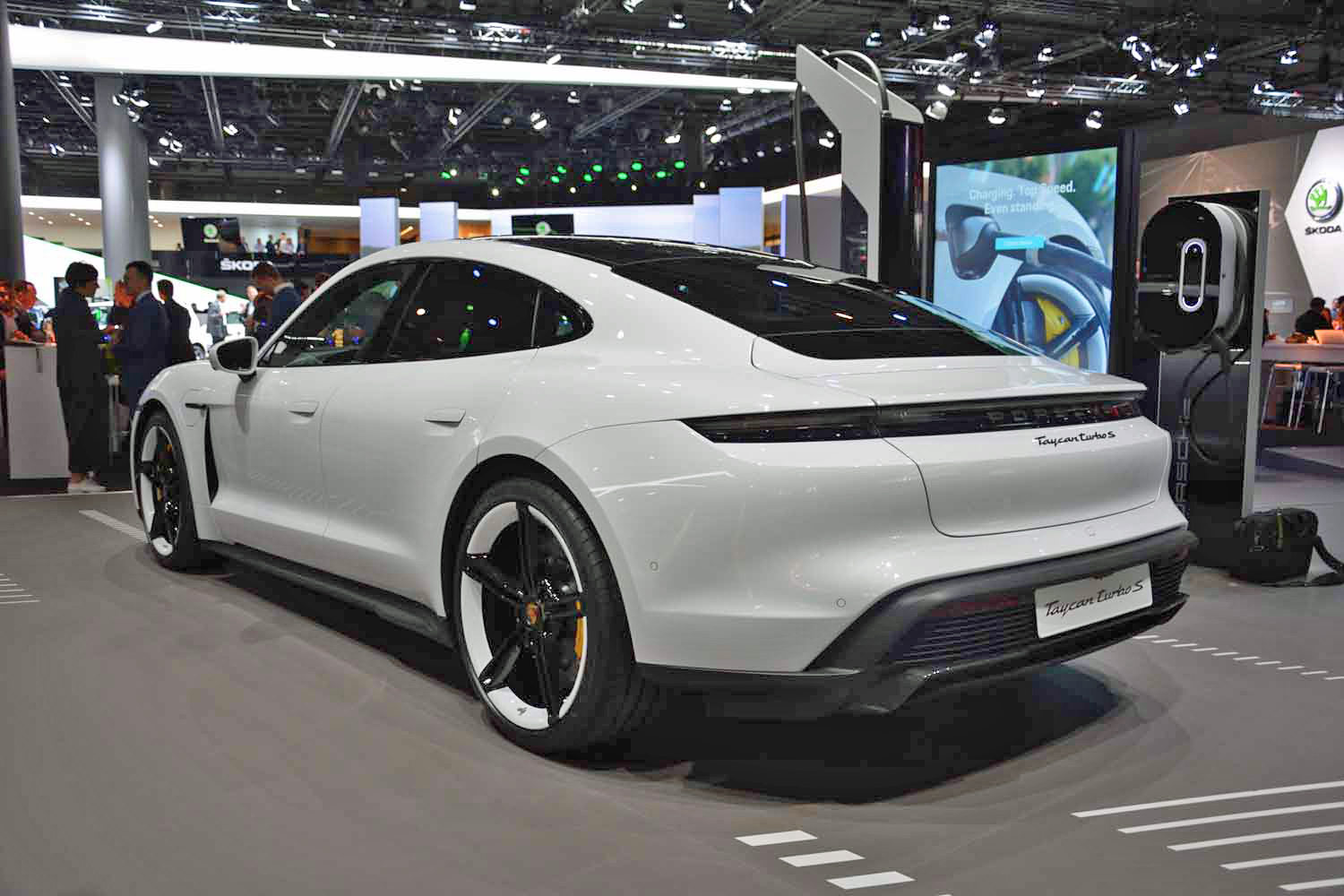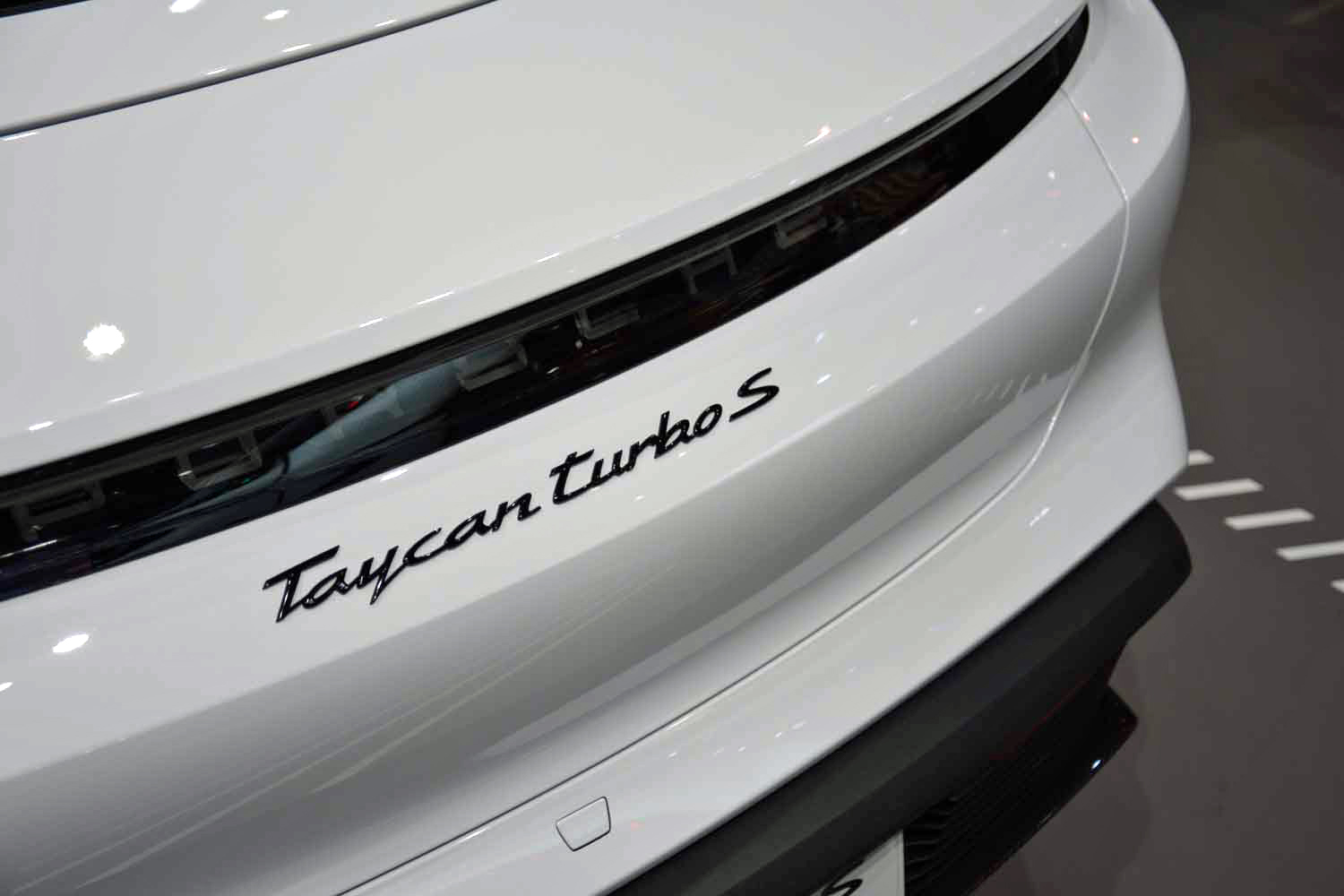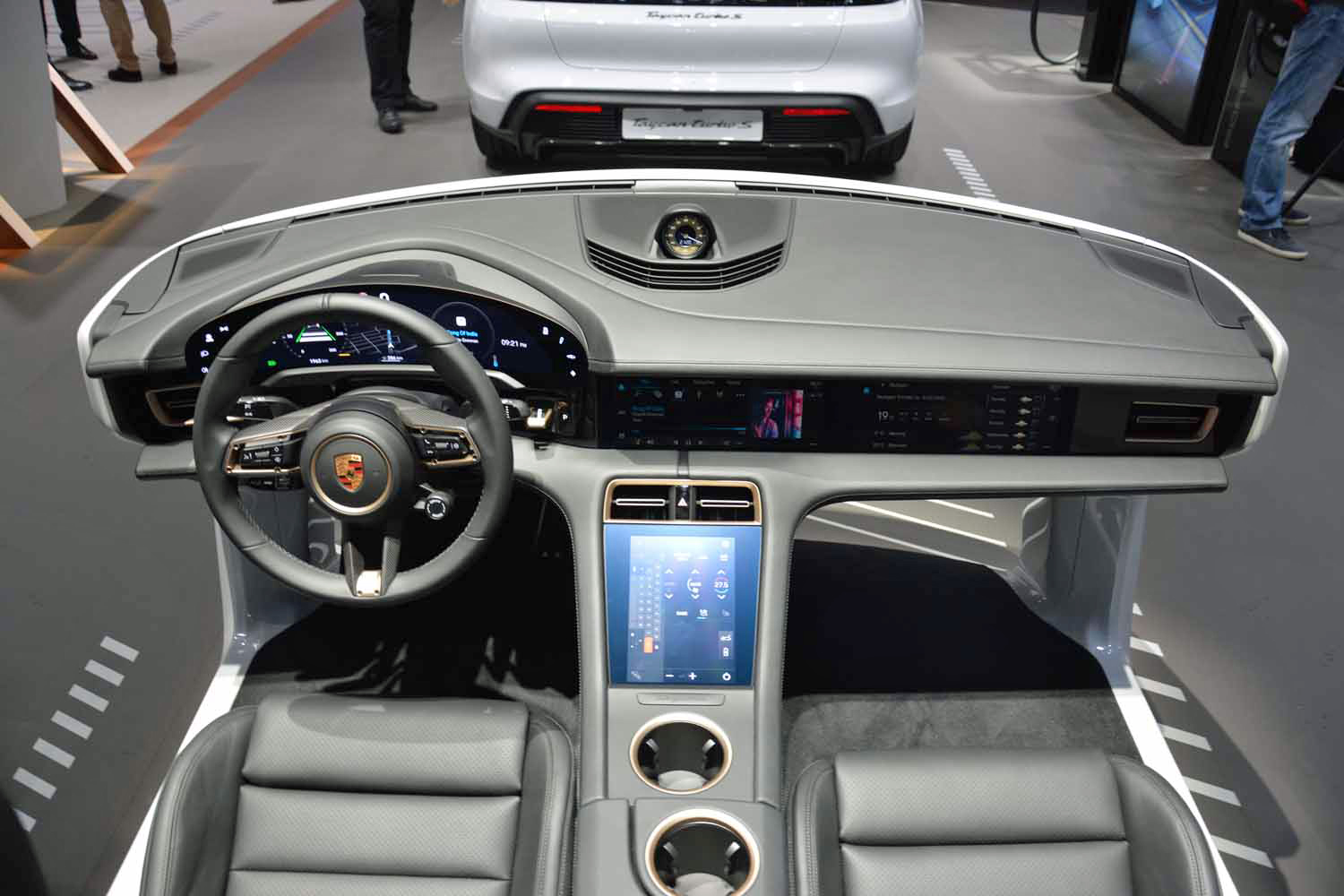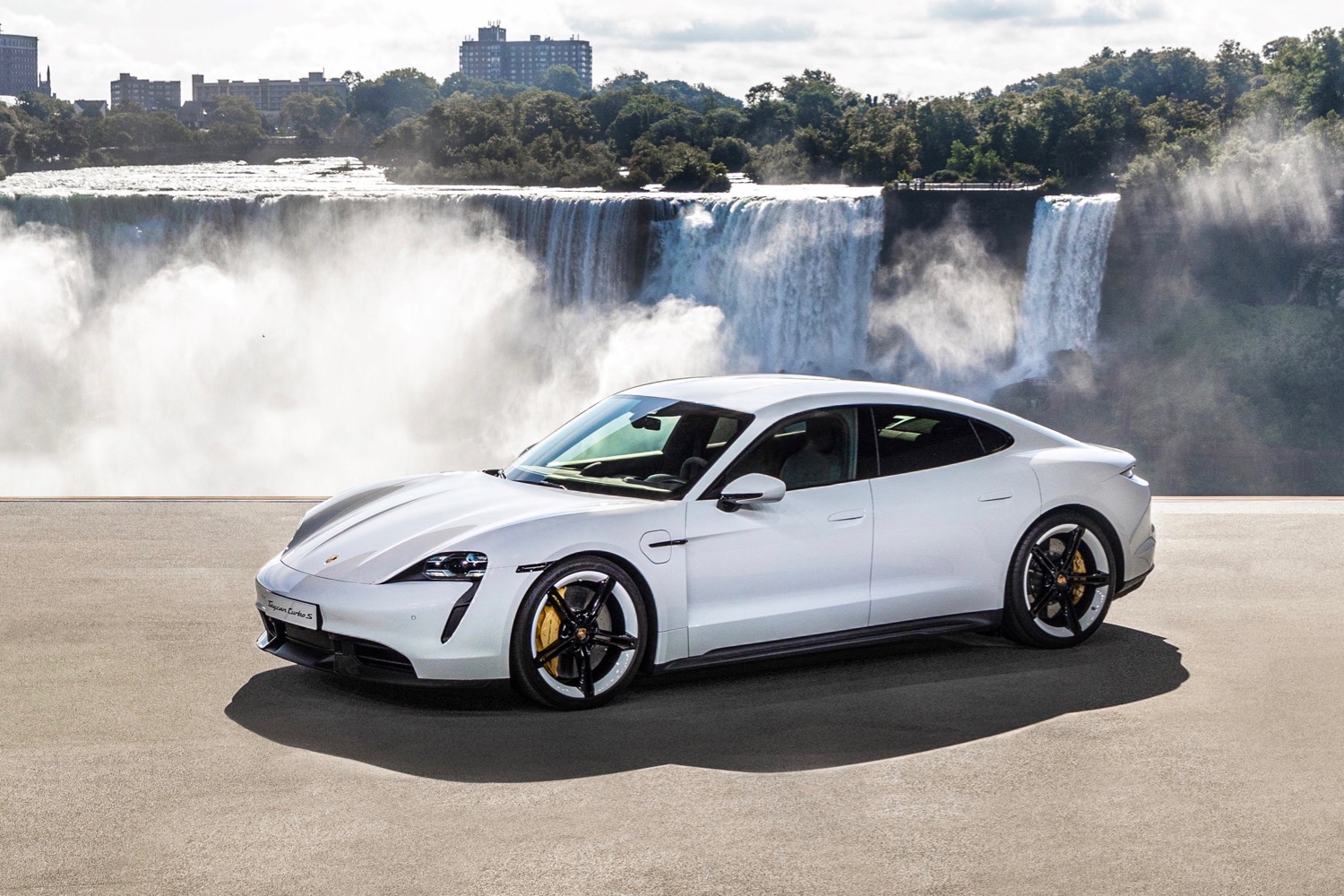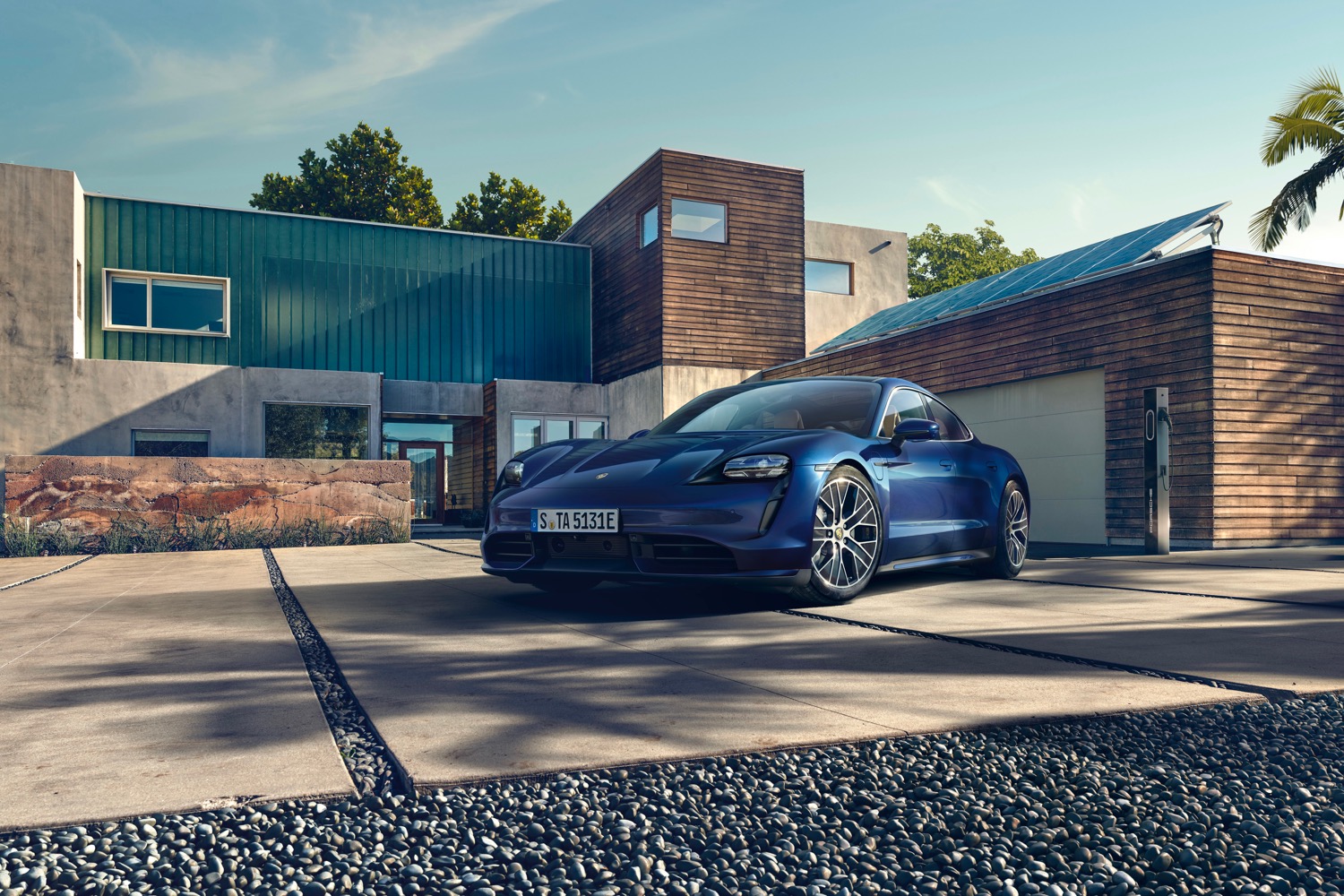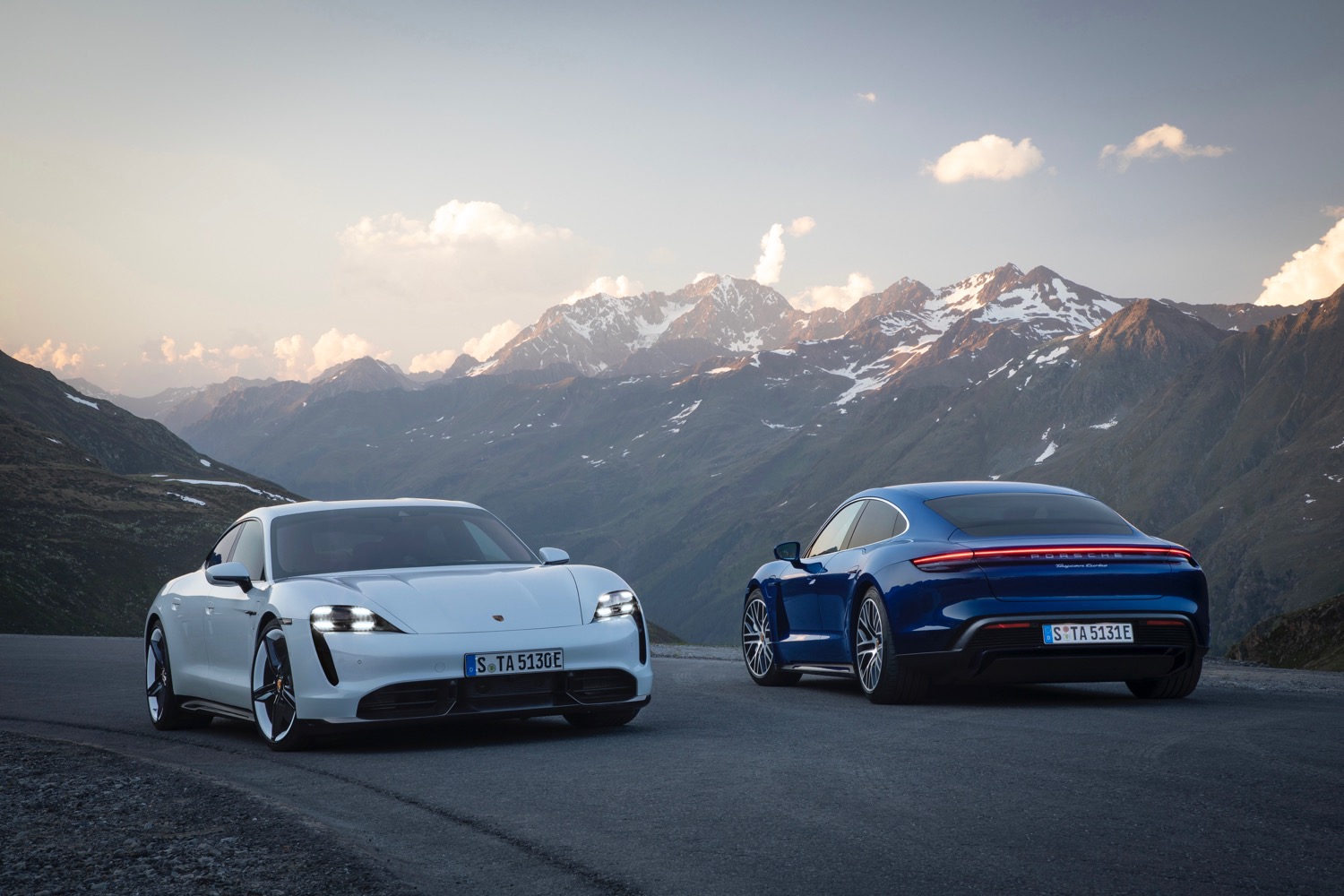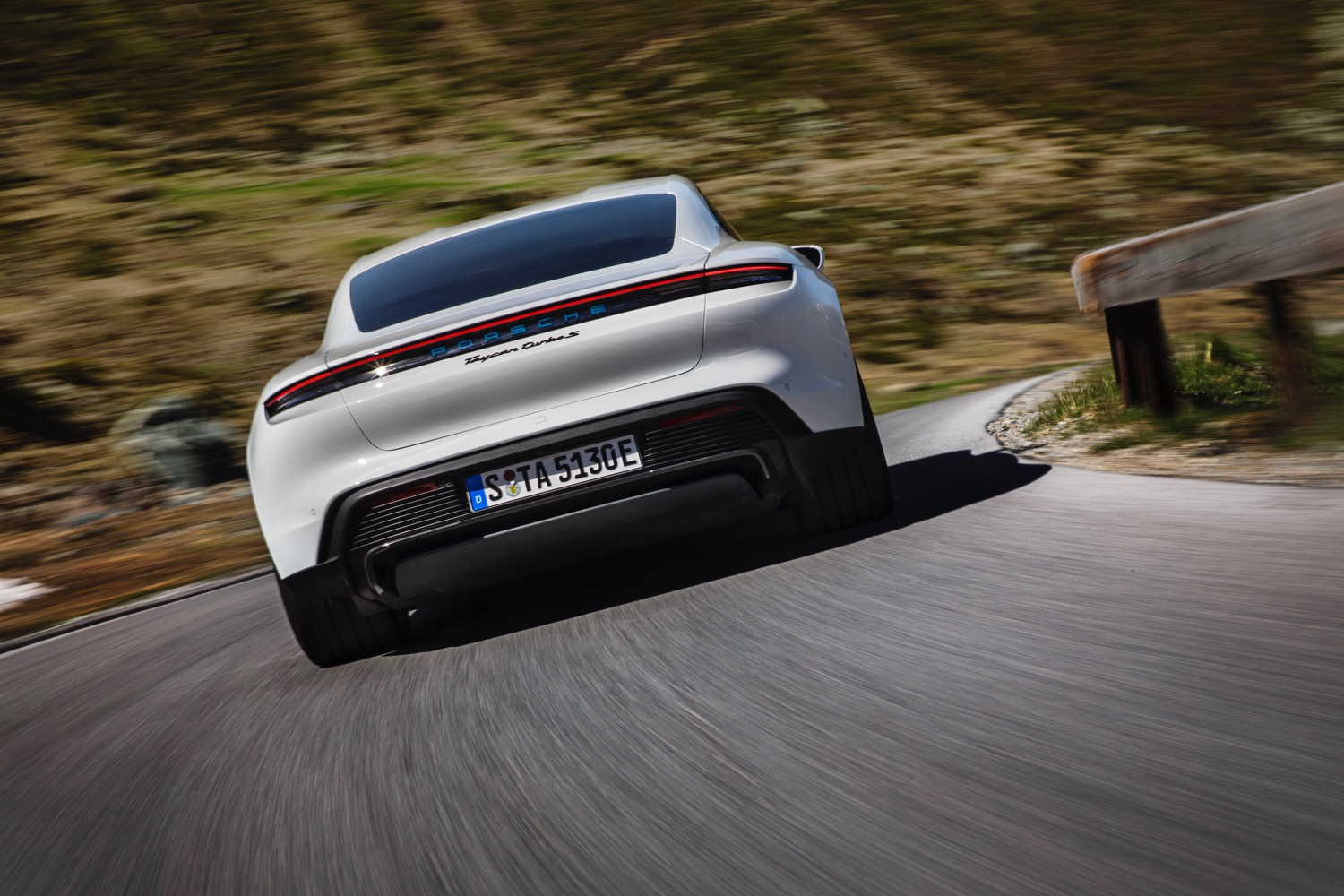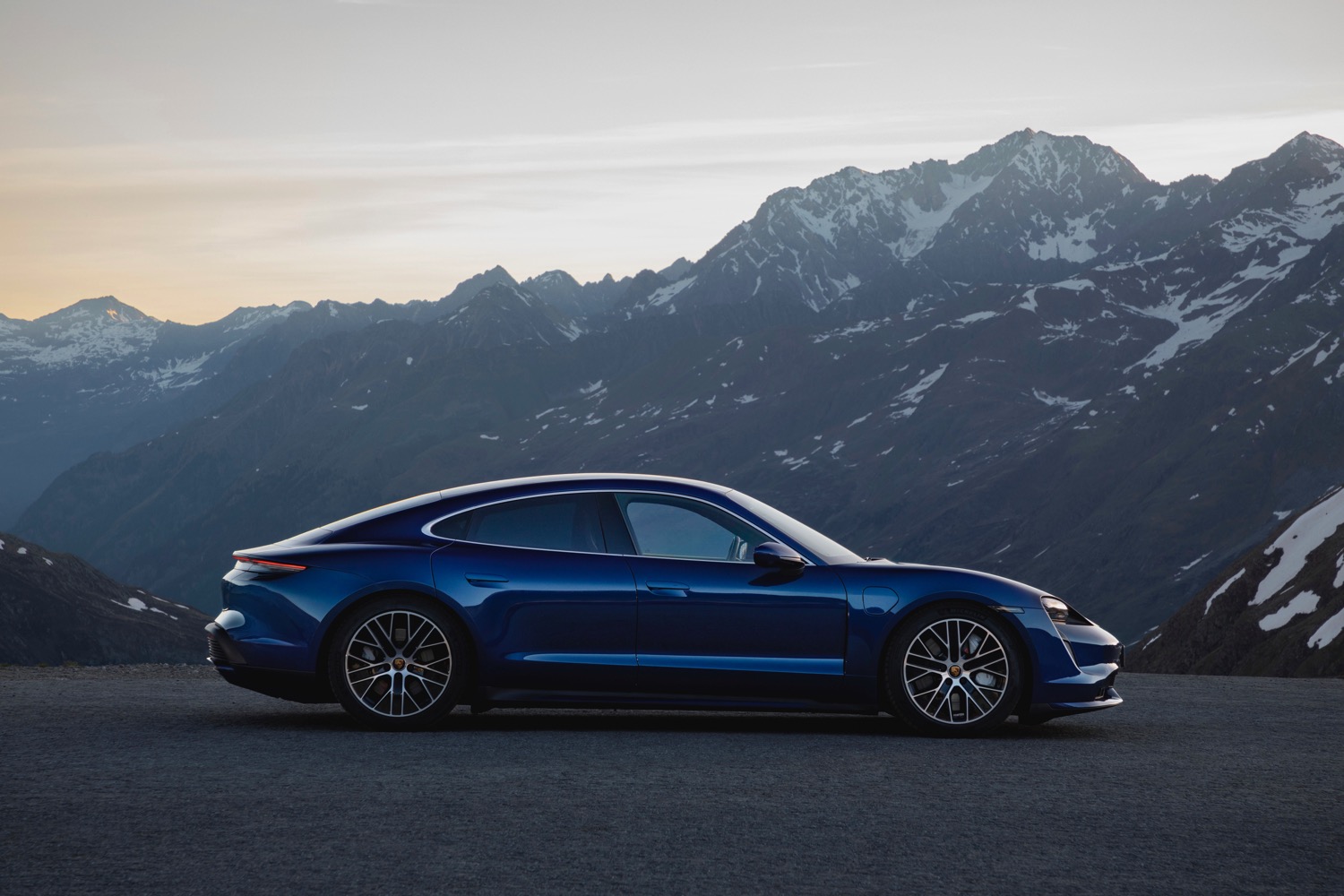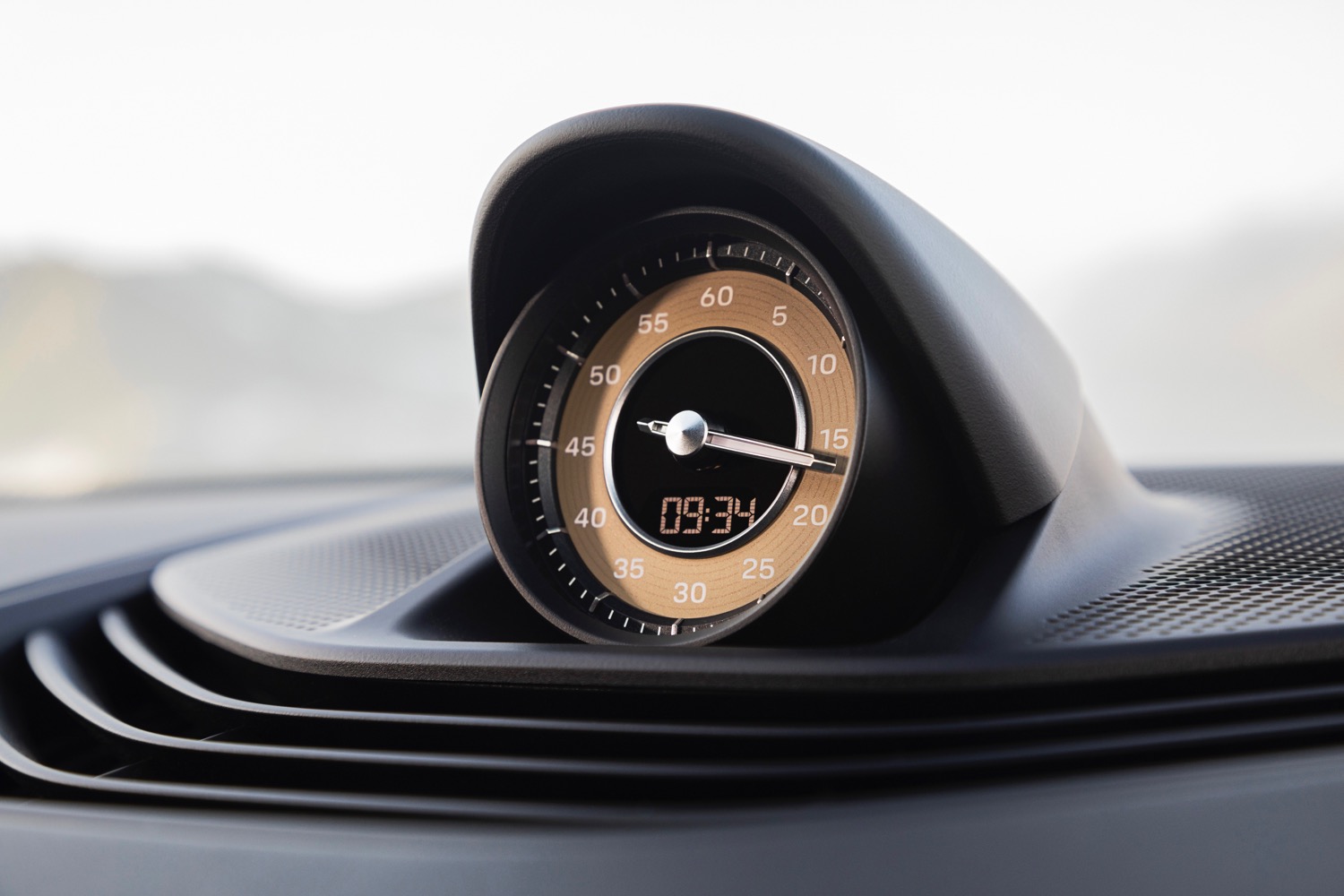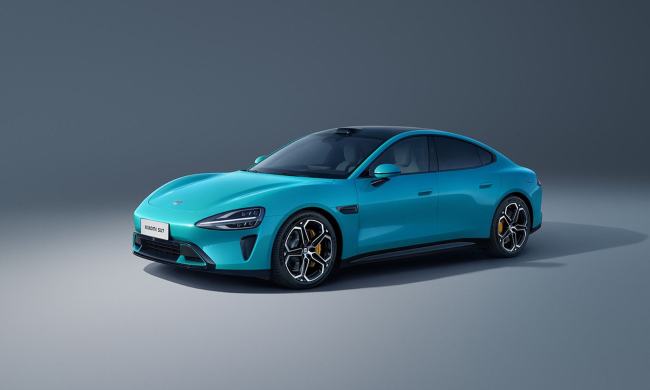Nearly five years ago, Porsche announced that it would launch its first all-electric car by the end of the decade. After numerous teases of camouflaged prototypes, that car, the Taycan (pronounced “tie-con”), is finally here. As the first of many planned electric cars from Porsche, it marks a major turning point for the company. Digital Trends caught up with it during the 2019 Frankfurt Auto Show.
Performance and engineering
Bizarrely, Porsche chose to carry the naming scheme from its internal-combustion cars over to the Taycan. The first two versions will be the Taycan Turbo and Taycan Turbo S, even though electric cars don’t have turbochargers. The flagship Turbo S will have up to 750 horsepower, while the lower-level Turbo will have up to 670 hp, according to Porsche. The Turbo S will do zero to 60 mph in 2.6 seconds, while the Turbo will do the same in 3.0 seconds, Porsche claims. The quickest Tesla Model S variant, however, will reach 60 mph from a standstill in 2.4 seconds. The top speed of both versions of the Turbo is pegged at 161 mph.
Both the Taycan Turbo and Turbo S are all-wheel drive, with an electric motor powering each axle. While most electric cars don’t have multispeed transmissions, owing to the instantly available torque of electric motors, Porsche opted for a two-speed gearbox mounted on the rear axle. First gear emphasizes acceleration, while second gear has a longer ratio to improve efficiency at high speeds, according to Porsche. That should help maximize range, but we don’t know for sure, as Environmental Protection Agency range ratings for the Taycan haven’t been released yet.

As with internal-combustion Porsches, the Taycan features plenty of electronic aids to keep its driver out of trouble. Adaptive air suspension works to maximize grip while maintaining a comfortable ride, while Porsche Dynamic Chassis Control Sport actively counteracts body roll. The all-wheel drive system also has a torque-vectoring feature, which shunts power to one side in order to help turn the Taycan into corners. These systems are all managed together in real time, according to Porsche.
Like other electric cars, the Taycan uses regenerative braking to recover energy that would normally be lost as heat during deceleration. This helps improve range, and allows for so-called “one-pedal driving.” In fact, Porsche claims the Taycan’s regenerative braking system can handle 90 percent of braking in real-world driving. That means you only need to touch the brake pedal 10 percent of the time. Porsche sibling Audi made a similar claim for its E-Tron, so it’s possible that there was some technology sharing between the two automakers, which are both owned by Volkswagen.
Porsche previously revealed that the Taycan will use the most powerful charging system of any production electric car. The 800-volt DC fast-charging system will be able to recharge the 93.4-kilowatt-hour battery pack to 80-percent capacity in just 22.5 minutes, according to Porsche. However, that’s only helpful if Porsche installs one of these stations in your area. The Taycan will still be able to charge at less-powerful DC fast charging stations, as well as 240-volt Level 2 AC stations. It’ll just take longer.
Design and tech
Porsche has already shown the Taycan’s interior, which features a massive 16.8-inch digital instrument cluster, a 10.9-inch central infotainment display, and even an optional display for the front passenger. Functions are controlled by an 8.4-inch touch panel on the center console. As if that wasn’t distracting enough, the Taycan also gets Apple Music integration, and Porsche may even try to add a video-streaming function.
We haven’t mentioned exterior styling because there really isn’t much to talk about. The production Taycan looks very similar to the original Mission E concept that debuted in 2015, and the camouflaged prototypes that have been running around recently didn’t hide much. The Taycan does have a drag coefficient of just 0.22 — slightly lower than the 0.23 of a Tesla Model S. Like the Tesla, as well as Porsche’s own 911, the Taycan features a front trunk to expand cargo space. Porsche also created recesses in the battery pack called “foot garages” to make more room for rear-seat passengers.
More to come
Pricing for the 2020 Porsche Taycan Turbo and Turbo S will be revealed closer to launch, but Porsche has already said that it will follow those two models up with less-expensive variants. Porsche has also confirmed a production version of the Mission E Cross Turismo wagon concept, and an electric version of the Macan crossover. Porsche’s race cars will go electric as well; the automaker will enter Formula E in later 2019.
